Tank Destroyer
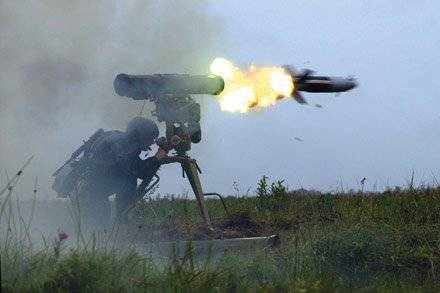
During the Second World War, there was a dramatic increase in the thickness of armor of tanks, and, accordingly, the caliber and weight of anti-tank guns increased. If at the beginning of the war anti-tank guns (PTP) of caliber 20 – 45 mm were used, then at the end of the war the caliber of PTP was within 85 – 128 mm. In 1943 – 1944 Soviet experts investigated the 726 cases of the subdivision of our medium and heavy tanks and self-propelled guns by the German PTP caliber 75 and 88 mm. The study showed that at a distance of more than 1400 m from 75-mm PTP, 4,4% of tanks were shot down, and from 88-mm PTP - 3,2% of tanks. In German manuals, the optimal opening range for 75-mm guns was 800 – 900 m, and for 88-mm guns - 1500 m. It was considered impractical to fire from long distances. So, of the best 88-mm German (and according to some specialists, the best in the world) PTP, the actual limit of the distance was only 1500. But the PTP of the end of the war was very heavy, expensive and difficult to manufacture.
How to effectively deal with tanks at distances greater than 2 – 3 km? This problem was first solved in 1944 in Germany, where the world's first anti-tank guided missile (ATGM) X-7 “Rotkappchen” (“Little Red Riding Hood”) was created. When designing the X-7, the X-4 air-to-air guided missile was taken as the basis. The chief designer of the rockets was Dr. Max Kramer. Management X-7 carried out by wire. A pair of wires tied round with the operator manual suggests a projectile at the target. The control system is very close to the Düsseldorf system of the X-4 rocket. The change in the direction of the projectile’s flight was carried out using interceptors — oscillating plates interrupting the air flow.
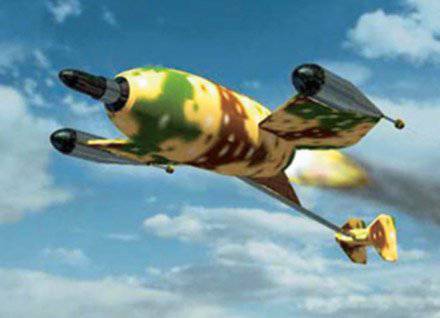
The X-7 rocket had a WASAG two-stage powder engine. The first stage was accelerating, within three seconds it developed a thrust of up to 69 kg. And the second step is the marching. For 8 seconds of flight, she maintained a constant thrust of 5 kg. The shell was made according to the aerodynamic scheme "tailless." Stabilization occurred using a wing stabilizer. To compensate for uneven (relative to the axis of the rocket) engine thrust, the X-7 rotated in flight at low speed. To facilitate the operator tracking the missile, two pyrotechnic tracers were installed on it. To use the X-7 in the infantry version, a launcher (PU), worn in a backpack, was developed. Also designed aviation PU on the FW-190.
During tests in 1944 and the beginning of 1945, more than 100 X-7 test runs were made. In connection with the end of the war, the matter did not reach combat use.
Thus, the Germans created the first classic first-generation ATGM. Generations of ATGM differ in their guidance systems. In the first generation laid manual guidance system, the goal and the eyepiece of the panorama guidance in one straight line - the line of sight. This guidance system has several significant drawbacks. So, the dead zone (innocent space) for first-generation ATGMs ranges from 300 to 700 m. The first-generation missiles made very high demands on the ATGM operator — the slightest inaccuracy and control of the missile was lost.
The first post-war ATGM was the Swiss Cobra-1, created in 1947 – 1948. German specialists took part in the creation of the complex. In West Germany itself, the production of ATGMs was allowed only in 1959. The first ATGM that went into production in Germany was the Cobra-810, a modification of the Swiss Cobra family.
However, in Western military literature, the pioneer in creating ATGMs is the French company Nord-Aviation. This is due to the fact that the French ATGM very quickly spread literally around the world. The fact is that France conducted a reasonable policy in the export of weapons. The weapon was sold to almost everyone who could pay. At the same time, private French firms and state-owned enterprises did not look back at either Washington or Moscow.
The first French ATGM SS-10 (factory name "Nord-5203") was developed from 1948 on the basis of German documentation. Formally, the SS-10 was adopted by the French army in 1957. But during Operation Musketeer in 1956, the SS-10 was successfully used by French troops against Egyptian tanks. The sandy plains of the Middle East were an ideal testing ground for ATGMs. Thus, during the 1973 war, up to 70% of the tanks of Egypt, Syria and Israel were destroyed by the ATGM.
ATGM SS-10 was launched from a single portable PU, as well as from passenger cars and trucks, armored personnel carriers and light AMX-13 tank. Nord, from 1956 to 1963, launched 30 thousands of SS-10 shells. It is curious that only 39% of ATGMs entered service with the French army, and the rest were delivered to dozens of countries, including the United States, Israel, Germany, Sweden, and Norway. The cost of one projectile was 970 dollars.
The advanced version of the SS-11 had a greater firing range and better armor penetration. Respectively increased weight and cost (one shell - 1500 dollars). The SS-11 ATGM did not have a portable PU, but was installed on automobiles, armored personnel carriers, light tanks, helicopters and airplanes.
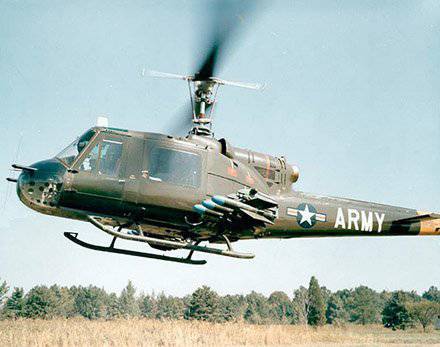
The heaviest French ATGM SS-12 was the only first-generation ATGM (not counting the Anglo-Australian "Malkar"), which had two control options - by wire and radio control. The SS-12 missiles had both a cumulative and high-explosive fragmentation warhead and could be used not only for tanks, but also for unarmored ground targets, as well as ships.
It is curious that the US military-industrial complex suffered a complete failure in creating its own ATGM. From 1953 to 1956 in the USA, the SSM-A-23 Dart ATGM was developed. It was created several versions of the projectile, including a ring stabilizer. But in 1957, a projectile with a cruciform wing stabilizer was adopted. However, its production was limited to a small series. The projectile was very heavy (up to 140 kg), guidance was extremely difficult.
As a result, the United States abandoned "Darth" and in 1959 began the massive purchases of French SS-10 and SS-11 ATGMs. The Americans installed almost all of the ATGMs on mobile installations - automobiles, medium M48 A2 tanks and helicopters. The T-113 anti-tank installation with the 149 SS-10 ammunition was created on the basis of the M11 tracked armored personnel carrier.
Only in 1961 – 1962. Americans bought about 16 thousands of SS-11 ATGMs, of which 500 was adapted for use from helicopters.
In 1961, the new French Entak complex was adopted by the US Army.
Creating ATGM combat use and had not gone unnoticed in Moscow. 1956 issued a decree of the USSR Council of Ministers on the “development of work on the creation of guided anti-tank weapons”
It is worth noting that after the war in the USSR, the German Little Red Riding Hood was tested. In addition, the domestic scientific research institutes received working documentation on the Cobras, SS-10 and SS-11, as well as "live" these products.
In 1956 – 1957 In the OKB-2, which was part of the HS NII-642, under the leadership of A. D. Nadiradze several prototypes of guided anti-tank shells (OOPS-1-7) were created.
Of these, we can distinguish the UPS-5 with a control system by radio for visual observation. The firing range was 5 km, armor penetration at an angle 60 ° - 350 mm. An interesting and long-range ATGM UPS-7, controlled by radio, but equipped with a television surveillance head. He could shoot at a distance of 7 km and pierce armor at the same angle, but already up to 450 mm.
The heaviest (70-kilogram) radio-controlled projectile at marching speed 270 m / s had a range of 30 km (!). The length of the projectile was 3 m, and the caliber - 220 mm.
OPS missiles were the victims of the “chelomeisation of the whole country” conducted by N. S. Khrushchev.
Let us estimate the clever moves of “chelomeization”. “By the order of Minaviaprom from 6 in November 1957, the City Research Institute-642 and OKB-52 were merged and transformed into the Scientific Research Institute-642 under the direction of Chelomey. OKB-52 became its branch. Then, in accordance with the resolution of the Council of Ministers of the USSR No. 293 – 140 of 8 in March 1958, the SRI-642 was liquidated, becoming the subsidiary of OKB-52 for developing cruise missile control systems 1957 "administered by the State Committee on Aviation Engineering (GKAT))".
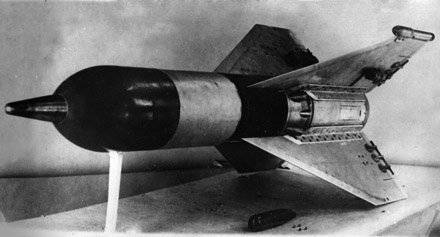
In scientific research institute-1 in the department number 10 with 1956, a prototype of the Cobra ATGM was developed. The projectile was aimed at the light beam, and the shooting was carried out from a tank. The light beam stabilized through a tank sight. Using the expelling charge, the Cobra flew out of a 160-mm smooth tank gun. The maximum firing range was 3 km. Experimental launches of shells "Cobra" were carried out at the Sofrinsky firing range.
However, 1959 received instructions to transfer all work to Minaviaprom OKB-16 (Chief Designer A. I. Nudelman), and in January 1960 was disbanded by department No. 10 of SRI-1.
May 8, 1957 was truly accepted historical Resolution of the USSR Council of Ministers No. 505–263, according to which the design of a whole galaxy of ATGM systems began.
Thus, in SKB-101 in Kolomna (chief designer B. I. Shavyrin), the design of the Bumblebee and Scorpion ATGMs began. Origin ATGMs differed little from the French SS-10. Moreover, the developer of "Bumblebee" S. P. Invincible recently admitted that SS-10 had been delivered to Kolomna "for study".
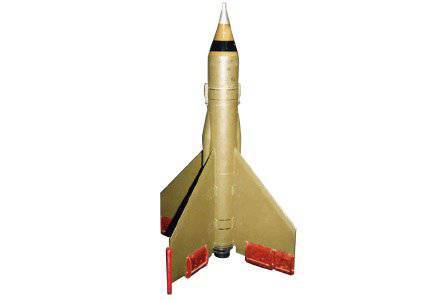
"Scorpion" had the original ring stabilizer. For a number of reasons, work on the Scorpion was discontinued, and the Bumblebee complex with the 3 M6 projectile was put into service and put into mass production.
The Bumblebee complex was installed on GAZ-69 and BRDM cars. The firing range was 1,5 km, and the armor penetration angle 60 ° - 150 mm. In the production of "Bumblebee" consisted until 1966 year. He became the first mass Soviet ATGM. As a result, a number of historians announced that “Bumblebee” was the first Soviet ATGM and no one was engaged in our work before SKB-101 ATGM.
Meanwhile, according to the decision of the Council of Ministers on 8 in May 1957, the development of many more ATGMs was started. However, the only complex adopted for service and released in a small series, was the tank ATGM 2 K4 "Dragon". KB-1 of the State Committee for Radio Electronics (GKRE) was appointed the lead developer of the complex. The projectile was occupied by KB-1 and TsKB-14, the chassis was made by plant No. 183 (Uralvagonzavod), and sighting devices were done by TsKB-393 (TsKB KMZ).
The complex had a semi-automatic guidance system with the transfer of command of radio beam. "Dragon" was designed for a special tank IT-1 "object 150" (IT - tank destroyer), which was developed at Uralvagonzavod with 1958, under the leadership of L. N. Kartsev. The tank had a gun and was armed only PU "Dragon". Ammunition of 15 missiles 3 M7 was placed under the armor of the tank. 12 missiles were placed in an automated piling, which carried the projectiles moving and feeding to the launcher.
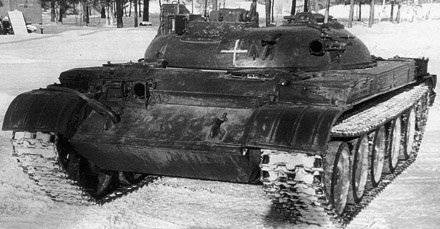
The Dragon complex was put into service and produced in small series from 1968 to 1970. For example, in 1970, Izhevsk plant manufactured 2000 3 M7 missiles, and Uralvagonzavod 20 IT 1 machines.
During testing and operation, the complex showed high reliability, but its design flaws (large dimensions, weight of control equipment in the tank was 520 kg, outdated components, large dead zone, etc.) and the absence of a gun on the tank caused the removal of IT 1 with production.
Interestingly, already in the aforementioned Resolution of the Council of Ministers No. 703 – 261 it was said: “To work out in 1968 the question of the expediency of transferring Dragon missiles to the T-64 A base while simultaneously improving the characteristics of weapons”. But the “study” showed that these works can be completed no earlier than 1972, when he can no longer compete with promising TOURS.
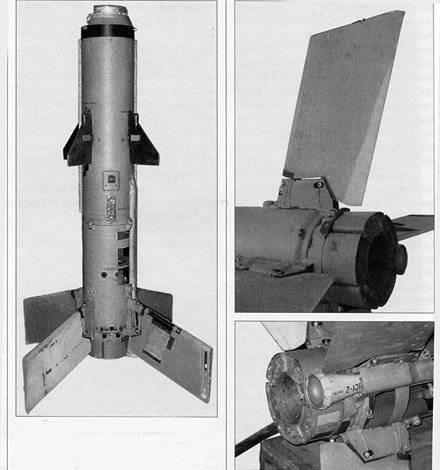
Few people know that the ATGM was occupied by the Central Research Institute-58, headed by Vasily Gavrilovich Grabin. Thus, on the topic number 14 in 1958, three variants of ATGM were developed: C-127 A, C-128 A and C-129 A. The son of VG Grabin Vasily Vasilyevich took part in the creation of the Dolphin projectile. The range of fire ATGM "Dolphin" was 3 km. He had to pierce 500-mm armor at an angle 30 ° to the normal. Marching speed of the “Dolphin” - 100 – 120 m / s; case diameter 180 mm. Shooting must be done with the tank launcher.
According to the resolution of the Council of Ministers of the USSR 8 in May 1957, an experimental model of a tank destroyer with the Dolphin complex should be delivered to Q4 1959 of the city. Machine weight about 431 t, armament: 25-mm launcher and 160 – 15 ATGM “Dolphin”.
It is curious that the Scientific Research Institute-58, in addition to the version with a wired control system, offered a variant with a thermal homing head. In December, the first launches of the “Dolphin” began on the Gorohovtsky testing ground of 1958.
"Dolphin", like the family OPS, was the victim of undercover intrigues. Dmitry Ustinov and Sergey Korolev simply “ate” the Grabin Scientific Research Institute-58.
However, on July 3 1959, by order of the State Committee on Defense Technology (SCF), the Central Research Institute-58 was incorporated into the Royal OKB-1 and completely changed the subject matter. The longtime enemy of Grabin Ustinov suggested that Khrushchev liquidate the scientific research institute so that Korolev could work on its territory to build solid-fuel intercontinental ballistic missiles. I note that neither Sergey Pavlovich himself, nor his successors have managed to bring any solid-fuel intercontinental ballistic missile to adoption.
Now let's move on to the Lotos anti-tank missiles, the development of which was started at TsKB-14 (KBP) in 1959. The Lotos missile had a semi-automatic guidance system and transmission of commands via the infrared beam. The control system was developed by TsKB KMZ. The developers believed that the Lotus guidance system would be more noise-proof than the radio-controlled system. The Lotus launcher had beam-type guides.
ATGM "Lotos" was supposed to be installed on a new heavy tank designed at the Chelyabinsk Tractor Plant (ChTZ). By decision of the Council of Ministers of the USSR No. 141 – 58 of February 17 1961, the development of this heavy tank was discontinued. Only a mock-up of a heavy tank was made on which factory tests of Lotos missiles were carried out in 1962. In the spring of 1964, at the Gorokhovetsky testing ground, the Lotos complex installed on the BTR-60 P. was tested. Missiles were launched both in a fixed and in a moving infrared beam. In addition, the design of the installation of the Lotus on the T-64 tank (432 object) was developed. Nevertheless, the complex was not accepted for service. Total costs on the subject amounted to 17,5 million (those!) Rubles.
In 1961, the development of the Typhoon TOURS (factory index 301 P) began. The head developer of Typhoon was OKB-16. The control system in "Typhoon" was made manually, the transmission of commands was carried out over the radio beam. The 9 M15 projectile was equipped with a cumulative fragmentation warhead. Moreover, the fragmentation effect of the 9 M15 was equivalent to the action of the 100-mm grenades from the D-10 cannon, which was armed with the T-54 and T-55 tanks. Beam launcher type.
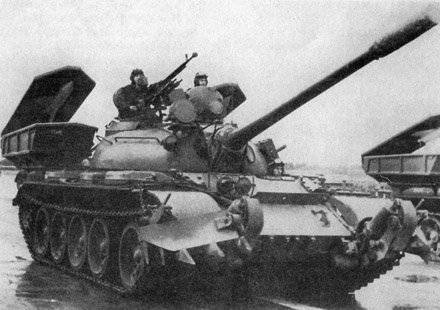
The Kirovsky Design Bureau, under the leadership of J. Y. Kotin, created a reckless rocket tank “287 object”, which had a double reservation.
The armament of the tank consisted of a Typhoon TOURS launcher, two 73 А2 "Lightning" 25-mm cannons and two machine guns paired with guns.
Instead of a tower on the roof of the case, a rotating platform was installed, in the center of which there was a hatch for a retractable launcher. PU stabilized in a vertical plane, which allowed the Typhoon to fire on the move at a speed of 20 – 30 km / h.
To the left and right of the hatch, two armored caps were welded to the platform, in each of which were placed 73-mm guns and a machine gun. In the guns "Lightning" used ammunition from the gun 2 A28 "Thunder", installed on the BMR-1.
The “Lightning” gun as a loading mechanism had two drums of a revolving type of 8 shots each. All armament was controlled remotely.
Two tanks "object 287" in April 1964, entered the factory tests at the Gorokhovetsky landfill. Of the 45 controlled starts, there are 16 target hits, 18 failures, 8 misses and 3 uncalled starts. Each tank passed at least 700 km. By the end of 1964, the tests were stopped to eliminate the identified deficiencies (the unreliability of the missile control system, the unsatisfactory effect of firing 2 A25 cannons, etc.). Later work on the "Typhoon" and completely stopped.
By the Decree of the USSR Council of Ministers on 30 in March 1963, work began on the creation of a tank "775 object" and two missile systems - "Astra" and "Rubin". At the technical project stage it was supposed to choose the best of them.
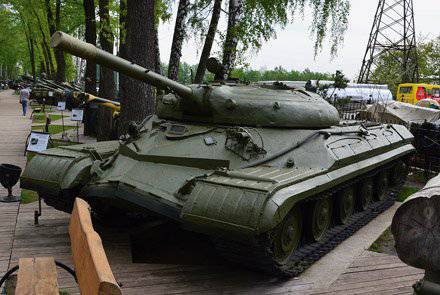
The missiles of both complexes were supposed to have supersonic flight speeds twice the speed of “Baby,” “Dragon,” “Lotus,” and others. These were the first TOURS fired from a tank gun (launcher).
The main developer of Astra was OKB-16, and the radio equipment of the control system was designed by OKB-668. By the decision of the section of the NTS GKOT from March 1, 1964 selected Rubin from the two complexes, and the work on Astra was discontinued. By that time, 601 thousand rubles were spent on “Astra”.
The SKB (later KMB) in Kolomna was appointed the lead developer of the Rubin complex.
"Rubin" had a semi-automatic guidance system with the transmission of commands over the radio beam. The complex was designed for a special rocket tank "object 775".
In 1962 – 1964 In the SKB-75 (Chelyabinsk Tractor Plant), under the leadership of P. P. Isakov, a missile tank "775 object" was created. The OKB-9 created for it a barrel rifled (32 rifling) D-126 launcher of 125 mm caliber, fired with TURS and unmanaged active-high-explosive high-explosive fragmentation projectiles "Bur". The maximum firing range of the Burami is 9 km. The launcher had an automatic loader and was remotely controlled by the commander-operator. D-126 was stabilized in two planes by the 2 E16 stabilizer.
The diesel power plant and transmission of the “775 object” were borrowed from the T-64 tank. But the experimental tank (“775 T object) had a gas turbine unit with two GTE-350 engines.
Hydropneumatic suspension allowed for a step change in the clearance of the machine.
Both crew members were placed in an isolated cabin inside the tower. The driver was located to the right of the launcher on a movable seat. He led the observation through the viewing instruments of his rotating turret, which was held in place during the rotation of the tower by special mechanisms. In this case, the driver and his viewing device remained constantly directed along the longitudinal axis of the hull, which ensured continuous monitoring of the road.
The tank “object 775” was not adopted due to the fact that the crew could not see the battlefield, the complexity of the device and the low reliability of the TURS guidance system.
On the basis of the “775 object” a tank “780 object” was also developed, with a crew of three in the turret. Moreover, the driver was located in the cabin along the axis of rotation of the tower. When turning the tower, it rotated around this cabin. The 125-mm rifled rifle could fire both TURSs and conventional artillery shells.
It should be noted that foreigners in 1950 – 1970 almost did not engage in special tours to arm tanks. It was only in 1958 that American designers were tempted by the idea of creating a universal tank cannon capable of firing conventional projectiles, ATGMs, and also missiles with a nuclear warhead. ATGM, also known as a close-range nuclear missile for tank units, was named Shillelagh and the MGM-51 index.
The lead developer of the projectile was Philco Aeronutronic. The rocket was supposed to be launched from an 6 inch caliber smooth-bore cannon (152,4 mm). The initial weight of the rocket was 41 kg, but in production samples it was reduced to 27 kg. Initially, the rocket was supposed to be controlled via radio channels, but later semi-automatic infrared control was used.
And in 1962, the mass production of medium-sized M60 A2 tanks with an 152-mm cannon for firing Shilleyla began.
In 1950 – 1960-ies, the USSR seriously lagged behind the United States in the creation of light tank nuclear weapons. Therefore, the Soviet response to the "Shilleyla" followed only in 1968, when the design of the Taran tank weapon system began. The complex consisted of one gun (launcher) caliber 300 mm and two missiles "Taran" and "Taran-1." The Taran missile should have fired 0,1 – 0,3 kt special ammunition at a range from 1 – 2 to 8 km. The “Taran-1” missile was intended for self-defense of a tank and was an ATGM with a range of 10 km and armor penetration 300 mm.
The carrier "Tarana" was originally supposed to be a tank "object 287", and then - a modernized tank T-64 A. The tank's ammunition kit was 2 – 3 Taran missiles and 10 – 12 Taran-1 missiles. The Taran complex was to become the carrier of a tactical nuclear weapon of a tank regiment.
But somewhere in the region of 1970 – 1971, apparently, as a result of a secret agreement with the USSR, all references to the use of Shilleyla as a carrier of nuclear ammunition disappear in the American press, and it becomes an ordinary ATGM. By the way, then it was the only ATGM that was included in the ammunition of American tanks. And at the end of 1972, work on the Taran complex was stopped.
Information